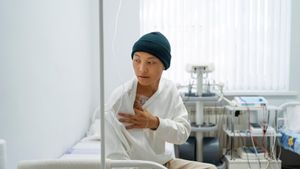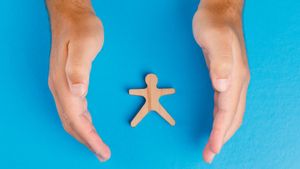YOGYAKARTA Feeling thirsty is the clearest sign of dehydration. Other symptoms of dehidation are recognized when feeling tired, lethargic, dizzy, headache, muscle cramps, mental fog, and heart palpitations. How do you know that dehydration has stages? Although it can be overcome in a way that meets none other than the body's lack of fluids, the following is an explanation of specific symptoms, due to severe dehydration, and how to deal with it.
Dehydration is recognized as a condition that the body lacks fluids. In addition to the above signs, it may also experience more frequent urination and a darker urine color. Dehydration also results in dry skin and less elastic than usual.
Everyone may not feel all the symptoms. It's just that thirst and the effects on the body can be clearly recognized. Usually the symptoms experienced during dehydration don't last long. In simple cases of dehydration, it can be done by taking drinking water and providing water intake. But sometimes it has certain effects afterward, such as constipation, muscle damage, kidney stones, kidney damage, and damage to other organs.
The simplest way to overcome dehydration, is to hydrate the body. Either by drinking mineral water or sports drinks with electrolyte. You can also move to a cool or shady place.
According to Alp Arkun, MD., head of emergency treatment services atMINA Permanente Fontana and the Ontario Medical Center, Southern California, fatigue, dizziness, and headaches are emergency symptoms of dehydration. If symptoms of dehydration in children, reported EverydayHealth, Wednesday, April 12, sluggish and weak suddenly may be clues to the child's body lack of fluids. According to internal medicine doctor Arielle Levitan, MD., children will become dehydrated faster than adults. That's because the proportion of water in children's bodies is higher than the total weight than adults.
Signs of dehydration in babies, recognized when his mouth is dry, crying without tears, not urinating or dry diapers after more than three hours, eyes and cheeks concave, a concave soft spot above the skull, and irritability.
Dehydration is categorized into 3 stages. Light stages, caused 5-6 percent of body fluids are lost. Usually, symptoms begin to feel at this stage such as feeling tired, dizzy, and headaches. When doing activities slow down.
In the second stage, moderate stage of dehydration where 7-10 percent of body fluids are lost. This stage is recognized by a decrease in blood pressure, dry skin, pulses faster than normal, reduced urine production, and sagging skin after being pinched.
At a severe stage, the body loses 10 percent of the liquid and can cause more severe problems than the previous stages of dehydration. A person who is severely dehydrated, can faint, has seizures, and is at risk of causing death. According to Arkun's explanation, once lost body fluids reach 15 to 25 percent, death can be threatening.
It is important to know that the human body is mature, 60 percent consists of water. If a lot of fluids are lost and the electrolyte is insufficient, then the body function does not work normally. The electrolyte liquid that the body needs, including sodium chloride, potassium, calcium, sodium bicarbonate. This plays a role in maintaining the health of cells and tissues.
The body takes water from the digestive tract. Waste and excess fluids are removed by the kidneys and released as urine. Well, if the body does not have enough fluids it can interfere with the balance. The bad effect, the body is not able to regulate its temperature and function properly.
The English, Chinese, Japanese, Arabic, and French versions are automatically generated by the AI. So there may still be inaccuracies in translating, please always see Indonesian as our main language. (system supported by DigitalSiber.id)













